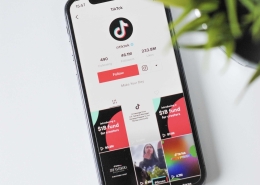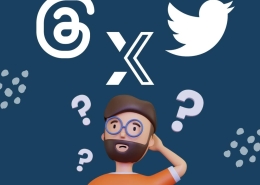Listen to this Blog:
It’s Time for A Paid-First Social Media Strategy
It’s no secret that organic (free) reach has been on the decline for years. At TwoSix Digital, we’ve always preached the importance of consistency and regularity when it comes to maximizing your organic reach on social media. Sadly, regular posting doesn’t seem to be cutting it for most anymore in gaining favor with the algorithms. The only way to truly combat the decline in organic reach is to use paid tools to ensure that our content gets in front of relevant audiences. That’s why it’s time for a paid-first social media strategy.
A paid first strategy is pretty simple. Run ads first. Post your best ads organically, later.
Benefits of a Paid First Strategy:
#1 Post Less, Get Better Results
By posting less often, you will see enhanced results by focusing more of your time on paid efforts. Instead of forcing yourself to post multiple times on multiple networks, a single paid post can effectively replace those mediocre organic results. When you take the time to use paid tools, you can reach outside of your social account’s userbase (likes, followers, etc.) and instead target an entire network’s audience. These paid promotions can dramatically enhance your ability to reach users interested in your promoted topics, leading to more engagement and clickthroughs.
These are the results of a year-over-year comparison on Google Analytics from one of our clients who utilize a paid first strategy.
Give it a try! Instead of scheduling five posts for Facebook, take the time to set up a single, paid post using your ads manager account (not the boost button) that focuses on your destination’s most differentiating experience.
Here’s how:
- Build a website traffic custom audience based on similar pages on your website
- Build a lookalike from that audience you just created
- Assign a budget. We suggest starting with $25. Remember that budgets are always scalable.
- Set the geographics that you can find in your Google Analytics
- Launch your ad for five days
- Immediately, you’ll start driving highly-targeted traffic to your website!
#2 Free Yourself Up to Create Better Content
Once you start focusing on a paid-first strategy, you will have the time (and incentive) to make sure you’re putting your best content in front of the right consumers at the right time.
Keep in mind that destination marketing is an extremely cyclical thing as destinations don’t change that much from year to year. Inevitably, you’ll eventually run out of ideas and start writing non-impactful content just for the sake of writing new content. Instead, your focus should be on creating high-value, evergreen landing pages that are useful to consumers (and visible by search engines) and those that help inspire the desire to visit your destination.
To do this, you can’t rely on quickly written blogs not optimized for success. Focus on refreshing content that you already have that has been useful to the consumer. Pay attention to keyword and seasonal trends relating to search and the content consumed on your website. Again, Google Analytics can help you here.
Remember, regular maintenance is what wins the long game – don’t try to recreate the wheel!
#3 Populate Your Organic Feed with Proven Content
Just because you’ve embraced a paid first social media strategy doesn’t mean that you’re giving up on organic posting. There’s a useful option within your ads manager that will allow you to post your most successful ads to your Facebook Page’s organic timeline.
You can find the sharing options in your ads manager under “Page Posts.” Here’s how:
- Simply select your “Ads Posts.”
- Identify the top performers (TIP: use the ad ID to find it quickly)
- From “Actions,” select either “Publish” or “Schedule.”
Essentially, you can use paid efforts to ensure that the content you post organically will resonate with audiences. Think of it as an A-B test for your organic posts. When you create ads, you create multiple versions of the ad. You’re using multiple images, different headlines, different captions, etc. Machine learning delivers the most engaged versions of our ads based on how users engage with them, which can be leveraged when we use publishing tools!
Lastly, one of the best parts of a paid first approach is the engagement (likes, reactions, comments, etc.) from the paid ad appears on your organic feed once you publish it. It’s instant engagement that can give a secondary boost to those posts that reside on our organic timeline. In other words, it makes your page looks high-performing to users that can see all of those paid engagement on your posts.
If you’re unsure how to start your paid-first digital strategy, contact one of our digital strategists. Don’t forget to sign up for our monthly newsletter to receive new digital marketing tips, trends, and best practices delivered directly to your inbox. If you’re looking for more destination marketing and tourism insights, check back to our blog page every week for fresh new content.















